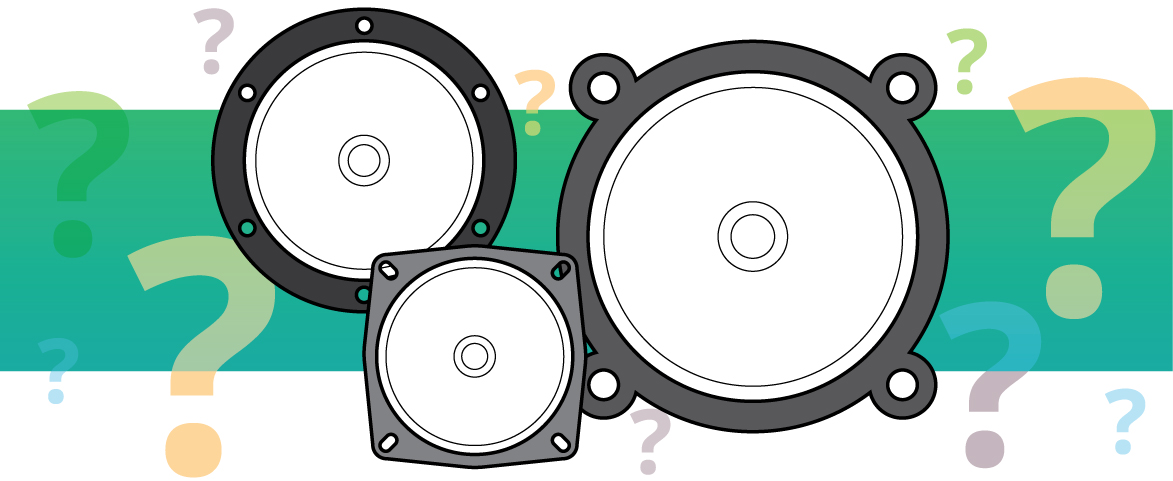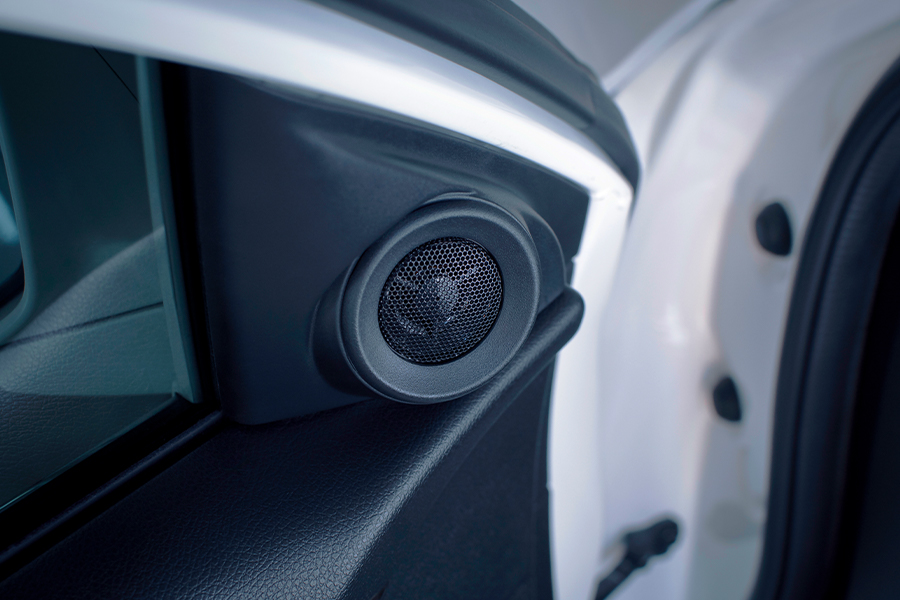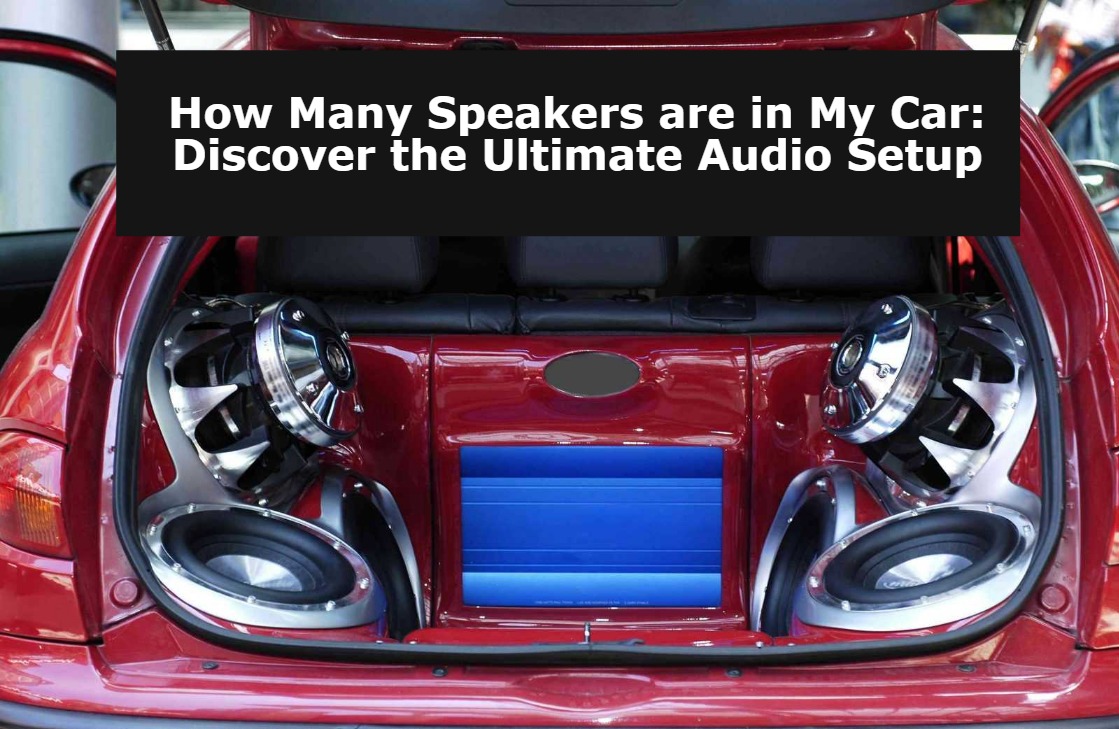How Many Speakers are in My Car: Discover the Ultimate Audio Setup
Understanding your car’s audio system can enhance your driving experience. Modern vehicles often come equipped with advanced sound systems for superior audio quality. High-end models may feature premium brand speakers and subwoofers. Standard cars usually have fewer speakers, often placed in the doors and dashboard.
Checking your car’s manual provides precise details about the speaker configuration. Car enthusiasts often upgrade their audio systems for better sound. Knowing your car’s speaker setup helps make informed decisions about potential upgrades. Advanced sound systems can include surround sound features for an immersive experience. Your car’s audio setup plays a crucial role in entertainment and navigation.

Importance Of Car Audio Systems
A good car audio system makes driving more enjoyable. Music sounds clearer and more vibrant, podcasts and audiobooks are easier to understand, and kids love listening to their favorite songs. Long drives become more pleasant with great sound.
A high-quality audio system can increase your car’s resale value. Buyers look for good sound systems in used cars. Better audio can make your car more attractive. Upgraded speakers can be a selling point. Investing in sound means better returns.

Types Of Car Speakers
Car speaker systems vary widely, typically featuring combinations of tweeters, midrange speakers, and subwoofers. The speakers can range from basic four-speaker setups to advanced systems with over ten speakers, providing immersive audio experiences.
Coaxial Speakers
Coaxial speakers are common in many cars. They combine the woofer and tweeter in one unit, making them easy to install. Coaxial speakers are often called full-range speakers. They offer good sound quality at a reasonable price. Many cars come with these factory speakers.
Component Speakers
Component speakers are high-quality speakers. They separate the woofer, tweeter, and crossover, placing each part in its best spot in the car. This setup gives better sound performance. Component speakers cost more than coaxial ones, but they offer excellent audio clarity. Many car enthusiasts prefer them for their cars.
Identifying Speaker Locations
Front door speakers are common in most cars. They usually deliver clear mid-range sounds. These speakers are often placed near the bottom of the door, which helps produce better bass. Check near the door handle for tweeters. Tweeters handle high-frequency sounds.
Rear door speakers are also important. They provide surround sound. These speakers are usually larger, and larger speakers can produce deeper bass. They are usually placed at the bottom of the door. Some cars have extra tweeters in the rear doors, which improves the sound quality even more.

Upgrading Factory Speakers
Upgrading factory speakers can significantly improve your car’s audio experience. Understanding how many speakers are in your car is essential for a seamless upgrade. Many vehicles come with four to six speakers, but some models feature advanced audio systems with more.
Benefits Of Aftermarket Speakers
Aftermarket speakers offer better sound quality. They enhance bass and treble. Factory speakers often lack clarity. With aftermarket options, you get a crisper sound. They are made from higher-quality materials, which means longer-lasting performance. Car rides become more enjoyable. You can also find custom options, which allow for a personalized audio experience. Many people notice immediate improvements.
Installation Tips
Check the speaker size first. Make sure it fits your car’s model. Gather all necessary tools, such as screwdrivers and wire cutters. Carefully remove the door panel. Be gentle to avoid damaging clips. Disconnect the old speaker wires. Connect the new speaker. Ensure the polarity is correct. Test the speaker before reassembling the panel. If unsure, seek professional help.
Choosing The Right Amplifier
Each speaker needs a certain amount of power. Too much power can damage speakers, and too little power will result in poor sound. Check the RMS rating of your speakers. Match the amplifier’s power output with this rating.
Ensure the amplifier is compatible with your car’s speakers. Some speakers need a 2-ohm amplifier, and others need a 4-ohm amplifier. Check your speaker’s impedance and verify that the amplifier supports this impedance. Matching impedance ensures optimal performance.
Subwoofers For Enhanced Bass
Subwoofers come in many types, each offering unique benefits. The most common types are powered and passive. Powered subwoofers have a built-in amplifier, making them easier to install. Passive subwoofers need an external amplifier and offer more flexibility in placement.
Subwoofers can be placed in various locations. Common placements include the trunk, under seats, and in the rear deck. The trunk placement offers the most space, while under-seat placement saves room. The rear deck placement provides direct sound.
Balancing Sound Quality
The number and placement of speakers in your car affect sound quality. Understanding your vehicle’s speaker configuration is essential for optimal audio performance.
Equalizers And Sound Processors
Equalizers and sound processors help improve car audio by adjusting different frequencies, making music sound better. Most cars come with basic equalizers, but advanced systems have more controls and offer better sound customization. Adjusting the settings is easy, and many cars have touch screens for this. You can boost bass or treble, making your favorite songs shine.
Speaker Positioning
Speaker positioning affects sound quality. Front speakers deliver clear vocals, and rear speakers add depth. Some cars have door speakers, and others have speakers on the dashboard. Proper placement ensures balanced sound. Most cars have four to six speakers, and high-end models may have more. These include subwoofers and tweeters. Subwoofers handle low frequencies, and tweeters handle high frequencies. Good placement enhances the listening experience.
Budgeting For Your Audio Setup
The cost of audio components can vary. Basic speakers might cost around $50, while high-end models can go up to $500. The amplifier is another key component. A basic amplifier can cost $100, while premium models might be around $1,000. Don’t forget the wiring and other small parts, which can add another $50 to $200 to the budget.
DIY installation can save money. You might spend $50 to $100 on tools. Professional installation can be more expensive. Costs can range from $100 to $500. The final cost depends on the complexity of the setup. Some people prefer professionals for a cleaner finish. Others enjoy the challenge of doing it themselves.
Frequently Asked Questions
How Many Speakers Does My Car Have?
Most cars have 4-6 speakers, depending on the model.
Can I Upgrade My Car Speakers?
Yes, upgrading to better speakers can improve sound quality.
Where Are Car Speakers Usually Located?
Speakers are typically in doors, dashboard, and rear deck.
What Types Of Car Speakers Exist?
There are coaxial, component, and subwoofer speakers for cars.
Do More Speakers Mean Better Sound?
Not necessarily. Quality and placement also impact sound.
How Do I Identify My Car Speaker Size?
Check your car manual or measure the existing speakers.
Can I Install Car Speakers Myself?
Yes, with the right tools and instructions, it’s possible.
Conclusion
Knowing how many speakers are in your car enhances your driving experience. Check your car manual for details. Upgrade if needed for better sound quality. Enjoy your favorite tunes with the best audio setup. Your car’s speaker system can transform every journey into a pleasurable experience.







